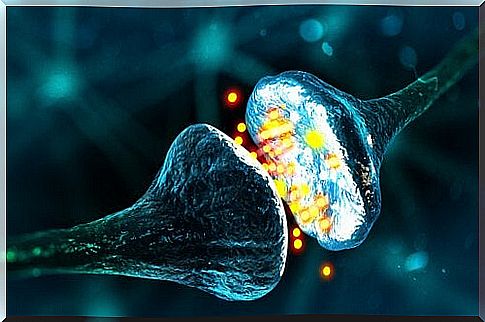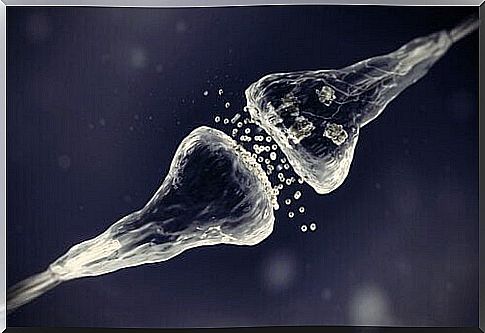Types Of Synapses: Neuronal Communication

For the brain to function properly, neurons need to communicate with each other. These functional interactions between neurons are called synapses. But how does this interconnection occur? What are the types of synapses?
Apparently, two main modalities of synaptic transmission are recognized : the electrical synapse and the chemical synapse. In general, synaptic communication usually occurs between the axon termination (the longest part) of the sending nerve cell and the cell soma of the receiving neuron.
However, contrary to what we might think, the synapse does not occur by direct contact. Neurons are separated from each other by a small groove: the synaptic or intersynaptic space. Next, the main types of synapses will be explained. Both are interneuronal connections, but each type has its own characteristics. Let’s look at how each one occurs.

Types of synapses: the chemical synapse
At the chemical synapse, information is transmitted by neurotransmitters. That’s why it’s called chemistry; neurotransmitters would be responsible for transmitting the message.
Furthermore, these synapses are not symmetrical, but asymmetrical. This means that they do not occur in exactly the same way from one neuron to another. They are also unidirectional: the postsynaptic neuron, the one that receives the synapse, cannot transmit information to the presynaptic neuron, the one that sends the synapse.
The chemical synapse has other specific characteristics. For example, it shows a high plasticity. That is, the synapses that were more active will transmit information more easily. Thus, this plasticity allows for adaptation to changes in the environment. Our nervous system is intelligent and privileges the communication of those pathways that we use frequently.
This type of synapse has the advantage of being able to modulate impulse transmission. But the question is: how? This is due to the fact that it has the ability to vary:
- The neurotransmitter.
- The trigger frequency.
- The intensity of the impulse.
In short, chemical transmission between neurons occurs through neurotransmitters that can be modified. Thus, chemical synapse transmission occurs as follows:
chemical synapse process
- First, the neurotransmitter is synthesized and stored in vesicles.
- Second, an action potential invades the presynaptic membrane.
- Then, depolarization of the presynaptic terminal causes the opening of voltage-dependent calcium channels.
- Then there is an influx of calcium through the channels.
- This calcium causes the vesicles to fuse with the plasma membrane.
- Thus, the neurotransmitter is released into the synaptic cleft via exocytosis.
- The neurotransmitter binds to receptors on the postsynaptic membrane.
- The opening or closing of postsynaptic channels follows.
- Then the postsynaptic current causes potential excitatory or inhibitory postsynaptic changing the excitability of the postsynaptic cell.
- Finally, there is a recovery of the vesicular membrane from the plasma membrane.

the electrical synapse
At the electrical synapse, information is transmitted through local currents. Furthermore, there is no synaptic delay (the time it takes for synaptic connection to occur).
These types of synapses have some characteristics opposite to chemical synapses. Thus, they are symmetrical, bidirectional and have low plasticity. This last feature implies that information is always transmitted in the same way. Thus, when there is an action potential in one neuron, it is replicated in the next neuron.
Do these two types of synapses coexist?
It is now known that electrical synapses and chemical synapses coexist in most organisms and in brain structures. However, we are still getting to know details of the properties and distribution of these two modes of transmission (1).
Apparently, most of science’s efforts have focused on exploring how the chemical synapse works. Thus, much less is known about electrical synapses. In fact, as discussed above, electrical synapses were thought to be typical of invertebrates and cold-blooded vertebrates. However, now a great deal of data indicates that electrical synapses are widely distributed in the mammalian brain (2).
To conclude, it appears that both synapses, chemical and electrical, cooperate and interact extensively. Furthermore, it appears that the speed of the electrical synapse can be combined with the plasticity of chemical transmission, allowing for decision making or the variety of responses we can give to the same stimulus at different times.









